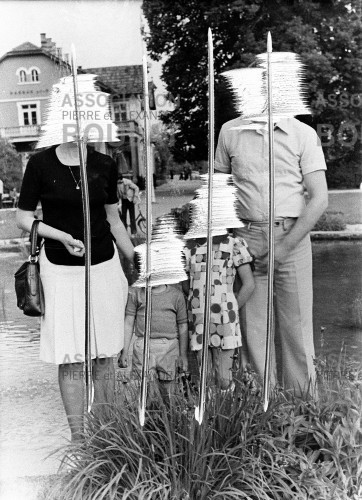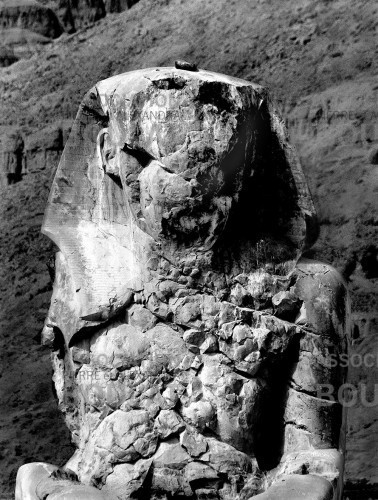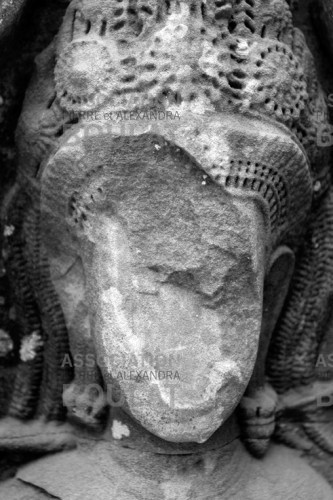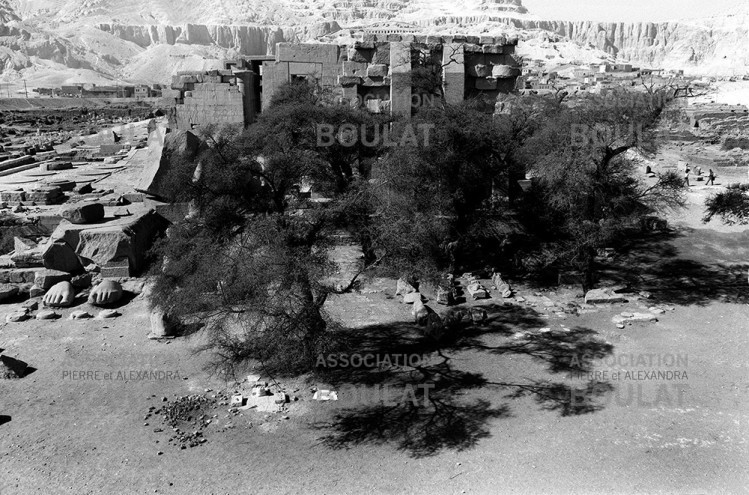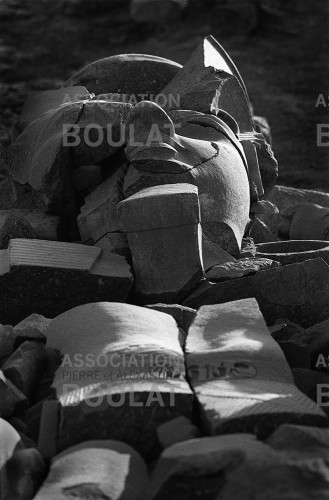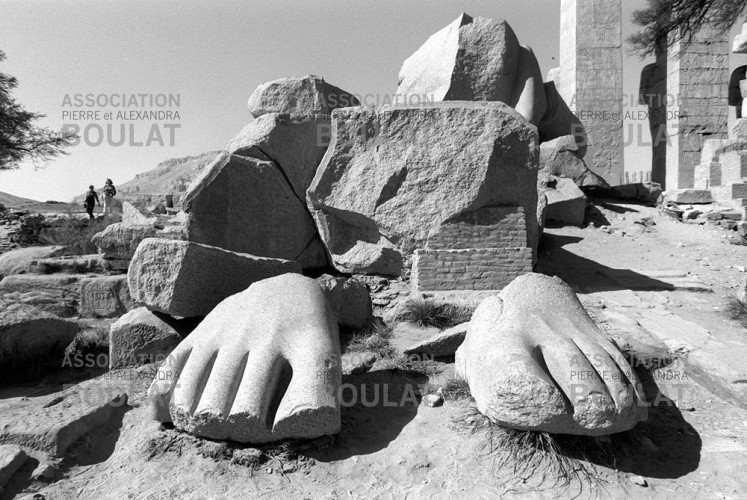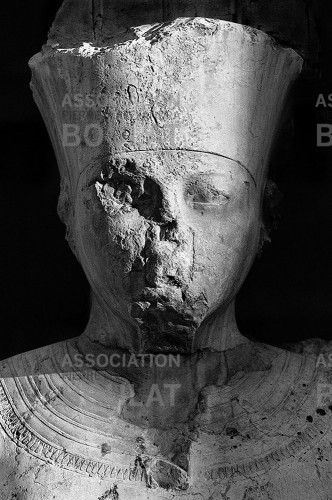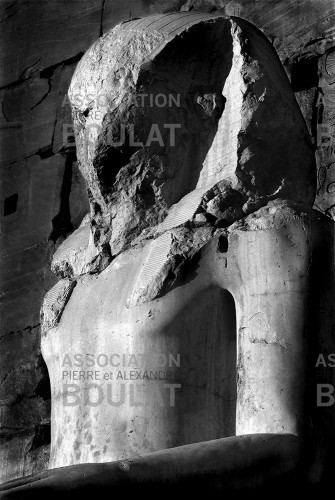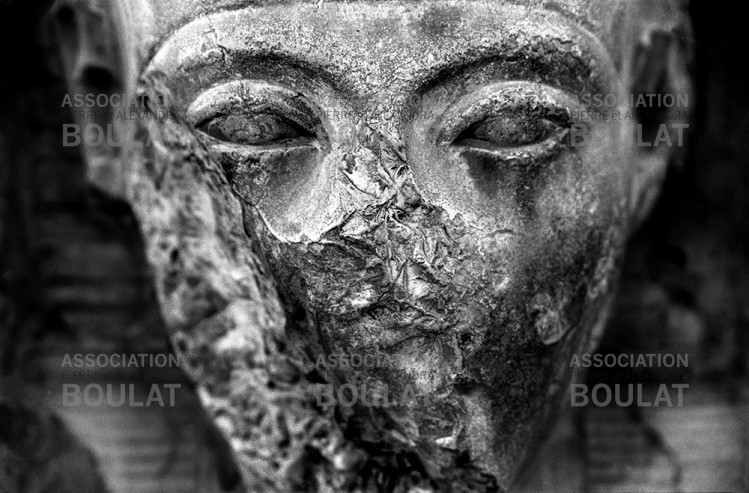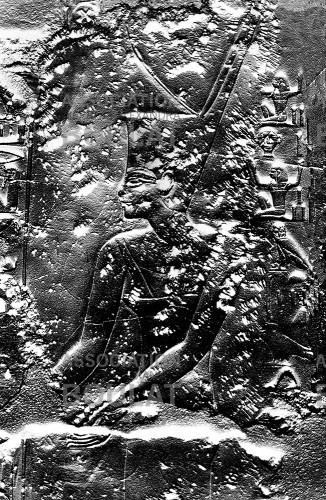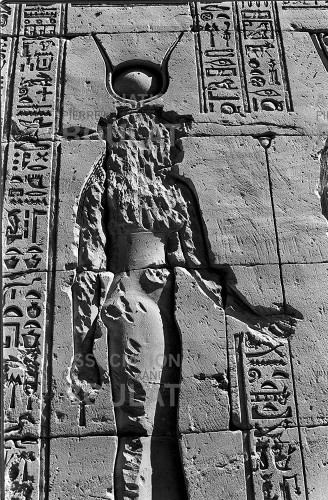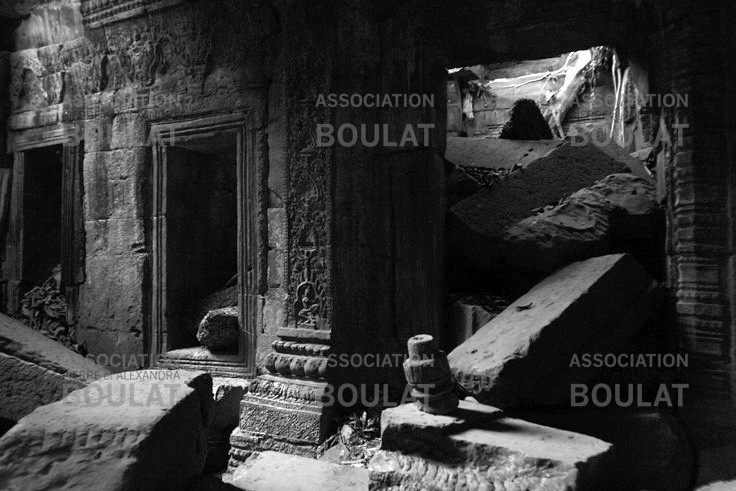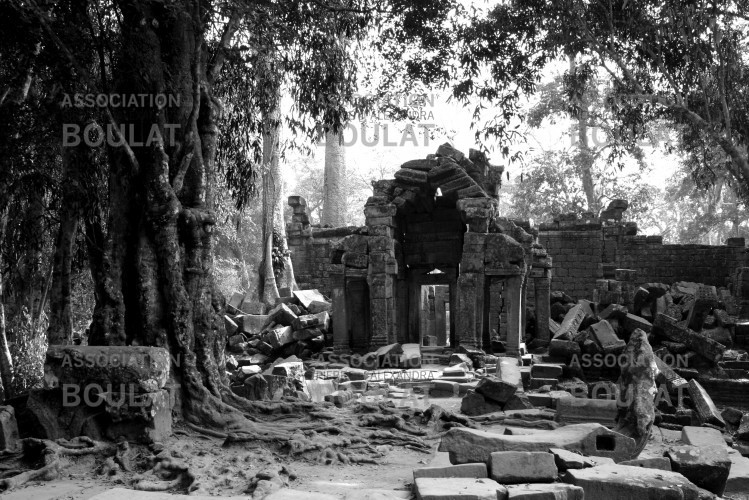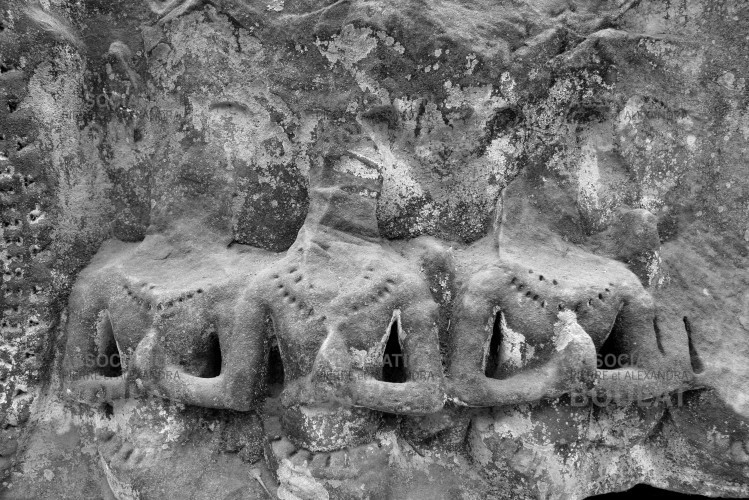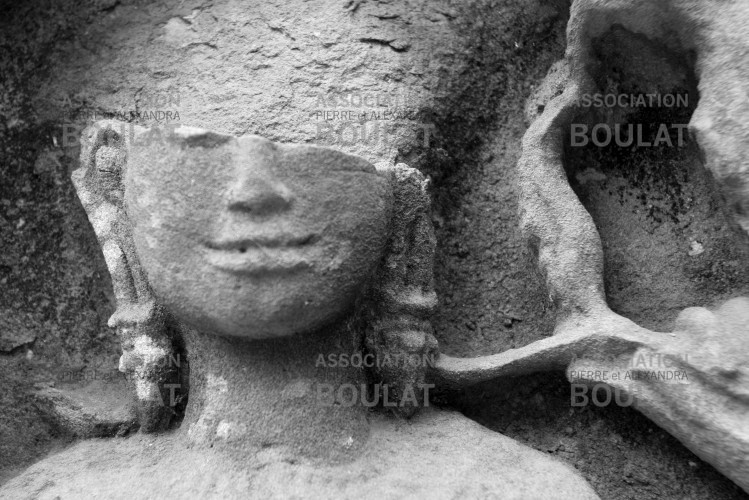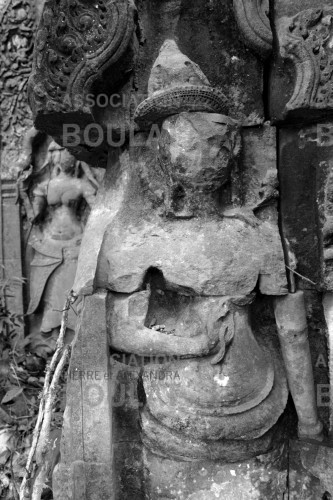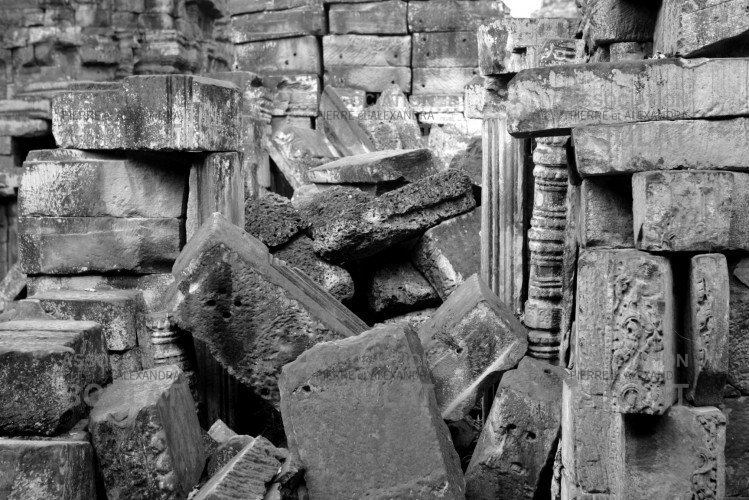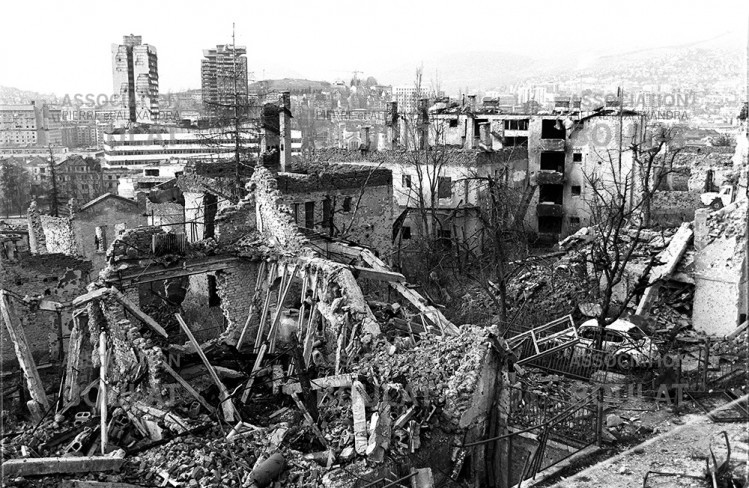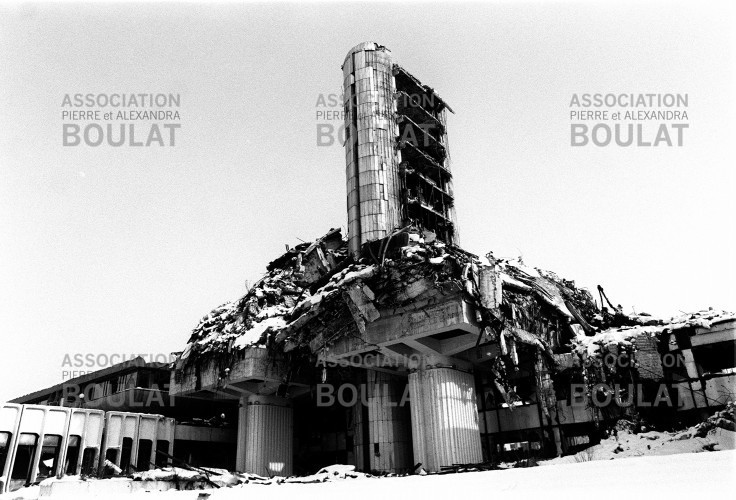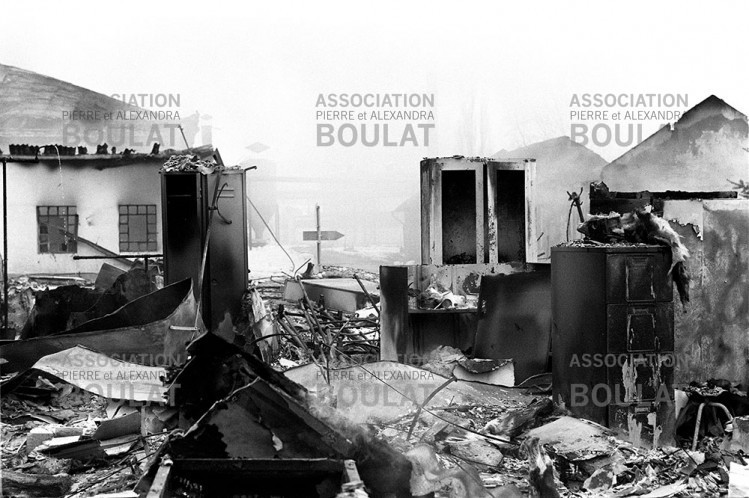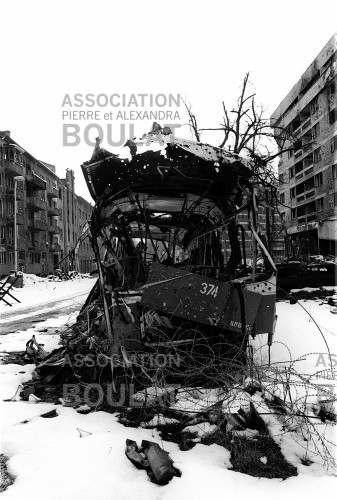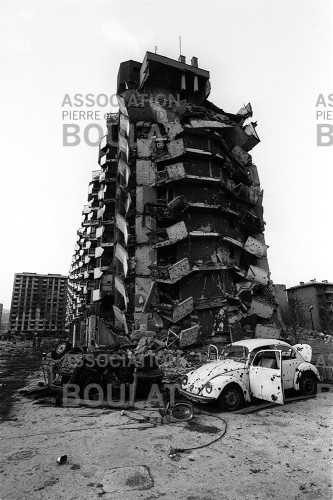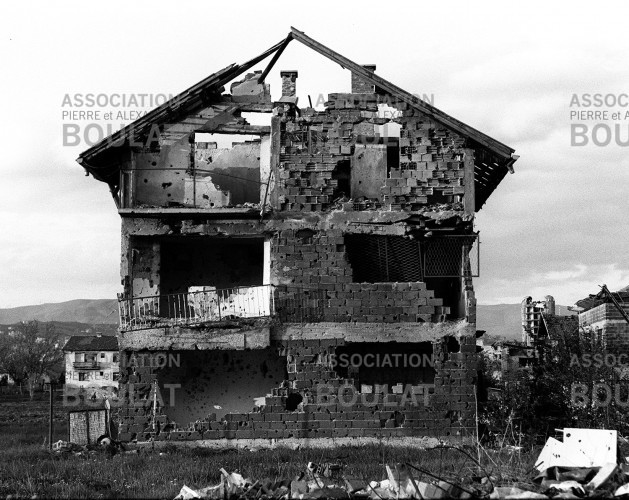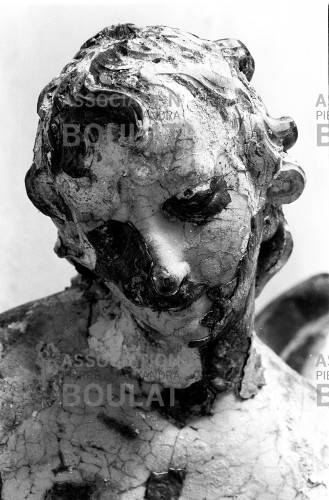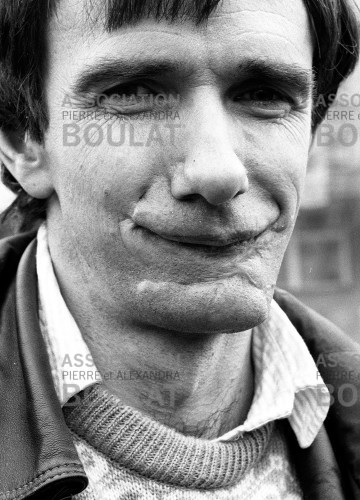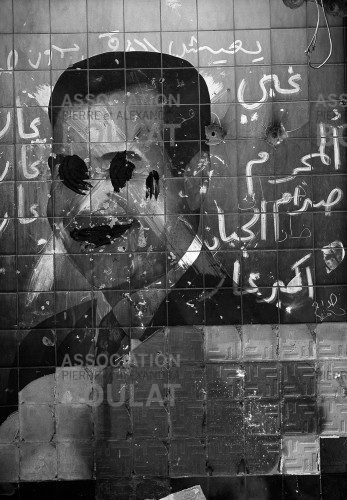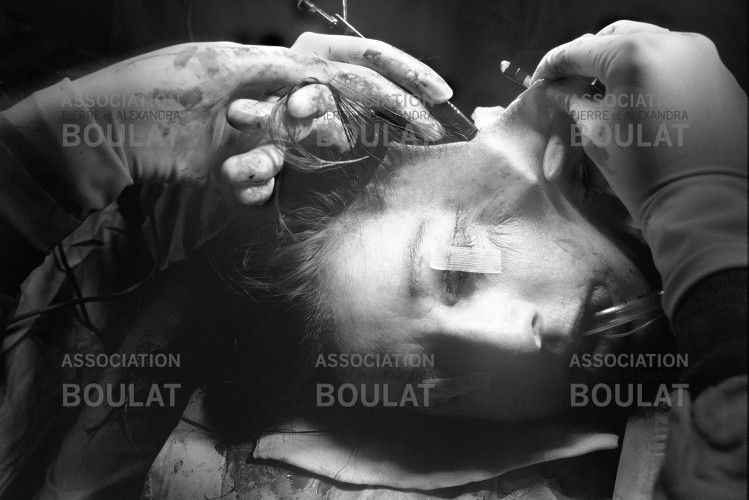Alexandra Boulat
Defaced
Defaced
Yugoslavia had had its peacetime and man tipped history, according to his tradition, equal to himself. The rest of the world was astonished by such atrocities. Presidents, warlords, soldiers and looters fought hard to impose their laws as the country descended into a cruel war although perhaps even banal. Modernism and progress, the souvenir of the Second World War still fresh, nothing worked. Humanity probably had to resigned to its condition.
As a photographer, I witnessed the events that shook the former Yugoslavia. My astonishment and curiosity redoubled each trip: so that was the war? I was fascinated.
Then the conflict was exhausted and the Serbs surrendered their territory to the Bosnians, spitting their hatred for the last time practicing scorched-earth policy. Mirna, a Muslim, could finally return home. From her house, only the walls were remaining, and watching the ground littered with broken glass and paper, she discovered that one of the Serbs who had occupied the premises had carefully removed, by scraping with a razor blade, the four faces of a family on a photo taken prior to the war, on which she appeared alongside her parents and her brother.
A painting by Montana: the damned had completed his work by giving long stabbing from top to bottom of the photo. His message was clear. Clear the face of the enemy, uproot, trample his soul, spoil his goods… destruction, desecration, death… the image was stinking hatred.
Between two trips in Bosnia, I once had the opportunity to take a few days of rest in Egypt, far from the news, the work and the mud. Far from press and surproduction of informations, far from the time which goes fast and after which you have to run. I was wandering in the sun.
To my amazement, I found myself on another battlefield, but I was arriving 2,000 years after the tragedy. The ruins were beautiful and this time, my fascination was unscrupulous. The landscapes shaped by nature and archaeologists had nothing sad. The world of the Egyptians rested in peace, dignity and beauty. Men in huge stone body, dismembered and wounded, enthroned there, all powerful, defaced, and others, elongated, were lying lifeless on the sand, their graves had been desecrated and their temples looted. Seeing the hundreds of square miles of hieroglyphics hammered and erased by enemy soldiers engaged in a merciless struggle against the truth, Mirna’s family photo reappeared like a flash in my memory.
The link was made and, spontaneously I linked Bosnia to the pictorial history of humanity dramas. I lowered the look and sounds reached me, I could hear the noise of the battle, the groans of the poor wounded rage of combatants and the rattling of their armor. Then I opened my eyes and came across reliefs that illustrate the scene. In Medinet Habou, Ramses II was stretching his bow,
preceded by a column of tanks and an army of soldiers involved in a body body with the enemy; above aligned captives, arms towards the air asking for the Pharaoh’s mercy…
Egypt appeared to me as the mirror of our civilization, I could see it ruined but yet immortal, with its great dates, his venerable leaders and their intrigues, its hours of prosperity and its decline until wars, misery and nature get responsible for its annihilation, history repeating to infinity.
The way I look on Egypt has no mysticism or aesthetic feeling. It is another aspect of War photo I am trying to present. Just cold and direct images taken under the influence of subjective impressions. After that trip, I had a new interest for the photo of Russian soldiers on the roof Reichstag in 1945, taken by Russian photographer Yevgeni Khalder. I rediscovered the panoramic photographs taken at Stalingrad in 1942, or the views Airline Hiroshima after the atomic explosion. I was then decided to go back along the Nile to complete my work.”
The events of contemporary history and the obligations of her professional lifeprevented Alexandra to return to Upper Egypt. As to her reports, she added some bits started to her project. She realized a story on cosmetic surgery, which restores a face to those who have lost it after a life accident. She photographed in Bamiyan, the niche that Taliban had deliberately jettisoned its Grand Buddha and the ruins of Angkor enclosed in the roots of trees.But she did not have the opportunity to put an end to her work.


